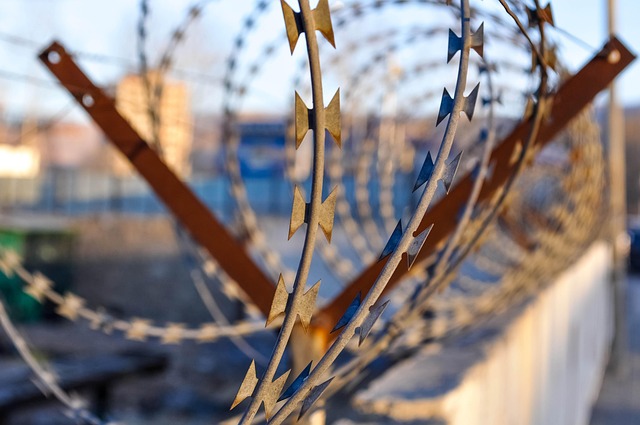Event security for executives demands a specialized, scalable team balancing physical protection, privacy, and comfort without compromising VIP experiences. Key roles include an Event Security Manager, supportive officers, communication specialists, and a cybersecurity expert. Comprehensive risk assessments consider attendee vulnerabilities, location, size, and logistical factors to tailor strategies. Technology like biometric access control, facial recognition, drone surveillance, and AI analytics enhance security. Clear communication through centralized command centers, encrypted channels, and regular briefings ensures efficient incident response and maximum executive safety at high-profile events.
In the realm of high-profile events with multiple VIPs and stakeholders, ensuring robust security is paramount. “Scaling Security Teams for Executive Events” explores the unique challenges and offers comprehensive solutions. From understanding the intricate dynamics of executive security to building flexible teams, risk assessment strategies, integrating technology, and effective communication plans, this guide equips event organizers with tools to navigate complex security landscapes. Discover how these tactics enhance event security for executives, fostering a safe and seamless environment.
Understanding the Unique Challenges of Executive Event Security
Event security for executives and VIPs presents a unique set of challenges that go beyond standard crowd control or general public events. With high-profile individuals in attendance, security teams must consider not only physical safety but also their privacy and personal comfort. This often means implementing discreet yet robust measures to ensure the safety of each individual without compromising their experience.
One significant challenge is managing multiple stakeholders with varying security needs and preferences. Each VIP may have specific requirements regarding their protection, from close personal protection officers to more subtle surveillance. Balancing these diverse needs while maintaining a seamless event flow demands a highly specialized and scalable security team.
Building a Scalable Security Team: Key Roles and Responsibilities
Building a scalable security team is paramount for events hosting multiple VIPs and stakeholders, ensuring comprehensive event security for executives. The foundation lies in defining key roles, each with distinct responsibilities. A dedicated Event Security Manager, for instance, orchestrates the entire operation, coordinating with local law enforcement and other emergency services. This manager also oversees risk assessments and develops site-specific security plans tailored to VIP needs.
Complementing this role are assigned security officers, tasked with monitoring high-profile individuals and maintaining order. Communication specialists play a crucial part, facilitating clear and concise dissemination of information among the team, attendees, and stakeholders. Additionally, a technical expert specializing in cybersecurity and surveillance technology ensures advanced protection against digital threats.
Risk Assessment: Identifying Potential Threats for VIPs and Stakeholders
When planning event security for executives and VIPs, a thorough risk assessment is non-negotiable. This process involves meticulous identification and analysis of potential threats to ensure the safety and security of all high-profile attendees. It begins by considering the nature of the event—whether it’s a corporate gathering, conference, or red-carpet gala—and the specific vulnerabilities associated with such settings. For instance, executives may be targeted by stalking, kidnapping, or physical assault, while stakeholders face risks like data theft, surveillance, or even extortion attempts.
The risk assessment should also account for the event’s location and size, as well as any unique logistical considerations. Access control, crowd management, and discreet surveillance are critical components in mitigating these risks. By thoroughly evaluating these factors, security teams can develop comprehensive strategies tailored to the specific needs of VIPs and stakeholders, ensuring their safety throughout the event.
Technology Integration for Efficient and Secure Events
In today’s digital era, technology plays a pivotal role in enhancing and securing events involving multiple VIPs and stakeholders. Event security for executives goes beyond traditional measures; it demands a robust, integrated approach leveraging cutting-edge solutions. Biometric access control, facial recognition, and real-time threat detection systems ensure only authorized personnel enter secure areas, protecting executives from potential risks.
These technologies not only streamline event logistics but also provide comprehensive coverage. For instance, drone surveillance can offer aerial security while AI-powered analytics monitor crowds for suspicious activities. Integrating such innovations allows event organizers to manage large gatherings efficiently and assure the safety of high-profile individuals, fostering a secure environment conducive to productive interactions.
Communication Strategies to Ensure Smooth Operations During High-Profile Gatherings
Effective communication is paramount for scalable security teams managing events with multiple VIPs and stakeholders. Clear, consistent messaging ensures everyone involved—from event staff to security personnel—is aligned on protocols and procedures. Implementing a centralized command center can facilitate real-time updates and coordination during high-profile gatherings. This allows for swift response to any incidents or changes in plans, enhancing overall event security for executives.
Utilizing secure communication channels like encrypted text messages, dedicated walkie-talkies, or digital platforms ensures confidentiality. Regular briefings and debriefings also help keep everyone informed about potential risks, new intelligence, or specific VIP requirements. This proactive communication strategy contributes to seamless operations, minimizing disruptions and maximizing the safety of all attendees—including executives—at such prestigious events.
Scaling security for events with multiple VIPs and stakeholders requires a strategic approach. By understanding the unique challenges of executive event security, building a diverse security team, conducting thorough risk assessments, integrating technology, and implementing effective communication strategies, organizers can ensure safe and seamless gatherings. Adopting these practices is key to managing high-profile events, fostering an environment conducive to successful business interactions, and demonstrating comprehensive event security for executives.
